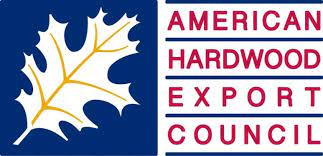A Story of Firsts: Gutchess Lumber Reaches Northern Vietnam
Ho Nai, Vietnam- Dang Nguyen and his furniture shop can list the cases for the existing orders: White Oak cabinets for young Vietnamese couples who just moved from the U.S back to No Nai, Walnut tables for the roof top bars of the Marriott hotels, Hard Maple flooring for the local Japanese temples; so on and so forth, for each order made.
All these orders are signed by Dang, the owner of the workshop. His father opened the shop back in the 1990’s, with only wood sourced from local species like Acacia and Rubberwood. Dang’s father knew that there was one job in the lumber industry he didn’t know how to conquer-finding quality hardwood to bring in from the United States. Dang set out to conquer this challenge.
“It is supper frustrating,” said Dang’s brother, Mr. Nguyen, on the phone. “We thought we were the master of White Oak furniture pieces, but cracks appear after 3 months because the lumber wasn’t dried well. We just wish people will respect our products, not complain and claim us.” Dang added, “Customers in Northern Vietnam will call you at 3:00 AM during the night, because he can’t close the Red Oak door in the living room, and that door comes out of our factory….” Dang paused for few seconds and said, “Wish you were on the phone with him.”
“I won’t understand Vietnamese, but I can guarantee our quality White Oak will ensure your sleep during the night,” Gutchess Lumber salesman Aman Huang replied.
Then, Dang asked, “Where is the region you harvest your White Oak logs? And what’s the color like?”
I told him, “Mostly in New York and Pennsylvania, and all in wheat color…. I mean very consistent color.”
“What’s the MC%?”
“Around 8-10%, but I recommend you set aside the stocks for 2 weeks after you receive the lumber. Lumber needs some time to adapt to local relative humidity.”

After several more conservations, the deal was made. It is the first load Gutchess Lumber ever sold to Northern Vietnam, and it is the first load of lumber Mr. Dang Nguyen bought directly from the U.S. 2-months after Dang received his hardwood from Gutchess Lumber, Dang and I met at a wood convention in Ho Chi Minh City, Vietnam. His words to me solidified my promise that he would no longer receive calls late into the night.
Dang simply said, “Now my masterpiece found the final piece, the quality hardwood from Gutchess lumber.”

I started with Gutchess Lumber as an intern. At the time, I was pursuing a master’s degree in Wood Science at SUNY ESF, while also taking supply chain management classes at Syracuse University. When I first started in 2015, I was in the log yard and did not foresee myself working in the lumber industry in the beginning. After more exposure to the mill production, studies of product yields, learning NHLA grades and stack lumber, plus free business trips to China as an interpreter for Gutchess Lumber President and Vice President, Matthew Gutchess and Brian Conklin, my interest was secured. Not only did it align with my education in wood and lumber techniques, but whole industry supply chain management as well.
Upon graduation from college, I was offered a position in the sales department and where I have been through the last 5 years. I am the Asia sales representative, which has continued those free business trips 4 times a year (pre-Covid). Whether I am abroad in Asia or at the Gutchess Lumber Cortland Headquarters, I can assure my customers that the premium quality lumber we provide will guarantee a peaceful nights sleep.

 Many people have asked how I ventured into this profession – I actually started out in electrical engineering, but quickly determined that was not the field I wanted for the rest of my working days. My love for the forest and outdoors started at a very young age. My father and mother would take our whole family out to a property in a remote area of Chenango County, NY. When he was just a young man, my father purchased these 60 acres, which were surrounded by state land. We referred to this place as the “farm house” because it was originally a home and farm stead that was built prior to the great depression on a seasonal road with no electricity or running water (still to this day). We used to have to pump water from a hand dug well and use oil lanterns for light at night. This was the place we would go each fall to hunt with a group of my fathers close friends, “the gang”, and we grew up eating venison/grouse and rabbit that we harvested from this property.
Many people have asked how I ventured into this profession – I actually started out in electrical engineering, but quickly determined that was not the field I wanted for the rest of my working days. My love for the forest and outdoors started at a very young age. My father and mother would take our whole family out to a property in a remote area of Chenango County, NY. When he was just a young man, my father purchased these 60 acres, which were surrounded by state land. We referred to this place as the “farm house” because it was originally a home and farm stead that was built prior to the great depression on a seasonal road with no electricity or running water (still to this day). We used to have to pump water from a hand dug well and use oil lanterns for light at night. This was the place we would go each fall to hunt with a group of my fathers close friends, “the gang”, and we grew up eating venison/grouse and rabbit that we harvested from this property.


